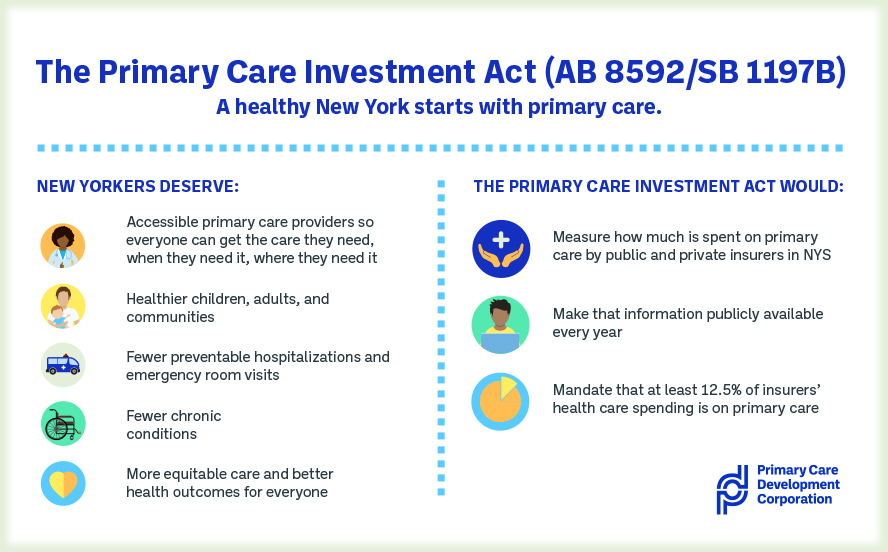The Primary Care Investment Act would increase investment in primary care, leading to increased access to high-quality care and improved health outcomes for all people across New York State.
Nationally, primary care accounts for approximately 35% of all health care visits each year – yet only about 5 to 7 percent of all health care expenditures are for primary care.
Primary care saves lives, improves individual and community health, and is unequivocally central to health equity.
Primary care has not only been shown to reduce overall health care costs but is the only part of the health system that has been proven to lengthen lives and reduce inequities at the population level.
New York and the U.S. as a whole continue to undervalue and underfund primary care, leaving many New Yorkers without access to high-quality primary care in their own communities. The New York State Scorecard on Primary Care, which was published by the Primary Care Development Corporation (PCDC) in April 2024, found:
- There are only 111.7 primary care providers (PCPs) per 100,000 residents in New York.
- 15% of New York residents reported not having a usual source of care or regular health care provider in 2021.
- In 2020, among those ages 6 to 17, the preventable hospitalization rate was 97.7 per 100,000 – with the potentially preventable hospitalization rate among Black residents being two times higher than white residents.
- In 2022, 5% of Hispanic/Latino residents reported avoiding care due to cost in the past year, three times that of white residents.
Introduced by Senator Gustavo Rivera and Assembly Member Amy Paulin, Chairs of the Health Committees of their respective chambers, the Primary Care Investment Act (Senate Bill 1197B/ Assembly Bill 8592) was passed by the Senate Health Committee on January 22, 2024.
If enacted, this legislation would put the state on a path towards better, more equitable health outcomes for all New Yorkers by requiring all insurers to:
- Measure and report the percentage of their overall health care spending that goes towards primary care.
- Require those who spend less than 12.5% on primary care to increase their primary care spending by 1% each year until they reach 12.5%.


